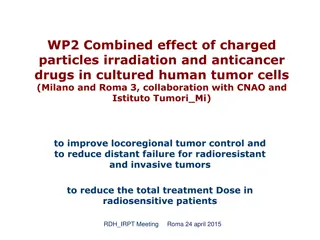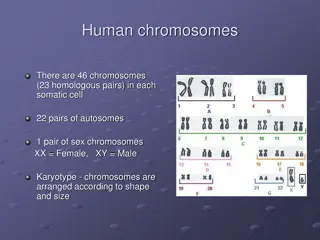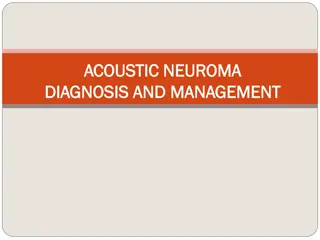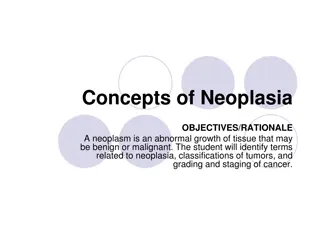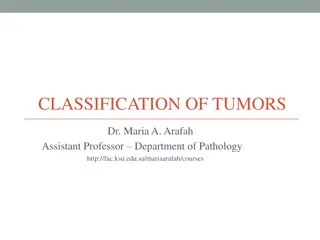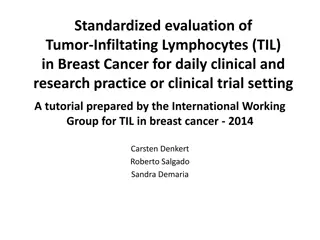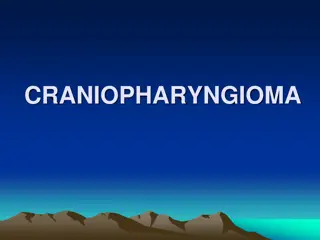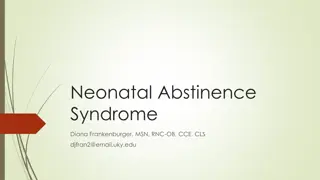Understanding Wilms Tumor in WAGR Syndrome
WAGR syndrome is a rare genetic condition associated with Wilms Tumor, aniridia, and developmental delays. Wilms Tumor is a form of kidney cancer mostly affecting children and is linked to genetic disorders like WAGR syndrome. The risk of Wilms Tumor is higher in children with WAGR syndrome, with potential causes being immature cells in the kidney known as nephrogenic rests. Diagnosis involves regular ultrasound imaging and examination of cells under a microscope. Nephrogenic rests, while common in WAGR syndrome, may progress to Wilms Tumor and require similar treatment. Understanding the WT1 gene and its role in kidney development is crucial in managing Wilms Tumor in WAGR syndrome.
Download Presentation

Please find below an Image/Link to download the presentation.
The content on the website is provided AS IS for your information and personal use only. It may not be sold, licensed, or shared on other websites without obtaining consent from the author. Download presentation by click this link. If you encounter any issues during the download, it is possible that the publisher has removed the file from their server.
E N D
Presentation Transcript
WILMS TUMOR IN WAGR SYNDROME
What Is WAGR syndrome? WAGR syndrome is a rare genetic condition which includes Wilms Tumor Aniridia Genital and urinary tract abnormalities Range of developmental delays
What is Wilms tumor? A form of kidney cancer Occurs mostly in children Also called nephroblastoma WILMS TUMOR IN WAGR SYNDROME
Who is at risk for Wilms tumor? Typical child 1 in 10,000 Child with WAGR syndrome 1 in 2 WILMS TUMOR IN WAGR SYNDROME
What causes Wilms tumor? Immature cells in the kidney called nephrogenic rests These cells are more common in children with genetic disorders like WAGR syndrome WILMS TUMOR IN WAGR SYNDROME
What are nephrogenic rests? Immature cells in the kidney Have the potential to develop into Wilms tumor Clusters of these cells may look like Wilms tumor on ultrasound WILMS TUMOR IN WAGR SYNDROME
WT1: the Wilms tumor gene Chromosome 11 Important for kidney development before birth and function throughout life Mutation or deletion of this gene increases the risk for Wilms tumor WT1 gene WILMS TUMOR IN WAGR SYNDROME
How is Wilms tumor diagnosed? Ultrasound imaging every 3 months beginning at birth/diagnosis of WAGR syndrome If a mass is detected, additional imaging such as MRI or CT may be needed Definitive diagnosis is made by examining the cells under a microscope WILMS TUMOR IN WAGR SYNDROME
Nephrogenic rest or Wilms tumor? Nephrogenic rests Are very common in children with WAGR syndrome Are benign (not cancer) May or may not progress to Wilms tumor May be present at the same time as Wilms tumor Often hard to tell the difference on ultrasound or MRI May require same treatment as Wilms tumor WILMS TUMOR IN WAGR SYNDROME
Treatment Treatment is tailored to the individual and may include Surgery Chemotherapy Radiation therapy WILMS TUMOR IN WAGR SYNDROME
Types of Surgery Radical nephrectomy Tumor, kidney, and ureter are removed Partial nephrectomy Only the tumor is removed Biopsy A tumor sample is removed to examine the cells under a microscope WILMS TUMOR IN WAGR SYNDROME
Chemotherapy Chemotherapy may be given Before surgery After surgery Before and after surgery A combination of drugs may be used, including Actinomycin D (dactinomycin) Vincristine Adriamycin (doxorubicin) WILMS TUMOR IN WAGR SYNDROME
Post-treatment Care Long-term survival rates are high Surveillance for Wilms tumor should continue throughout life Guidelines for long-term follow-up care for childhood cancer survivors: http://www.survivorshipguidelines.org WILMS TUMOR IN WAGR SYNDROME
The IWSA is working with researchers around the world to improve diagnosis and treatment www.wagr.org The mission of the International WAGR Syndrome Association is to promote awareness, stimulate research, and to support families affected by WAGR syndrome WILMS TUMOR IN WAGR SYNDROME









